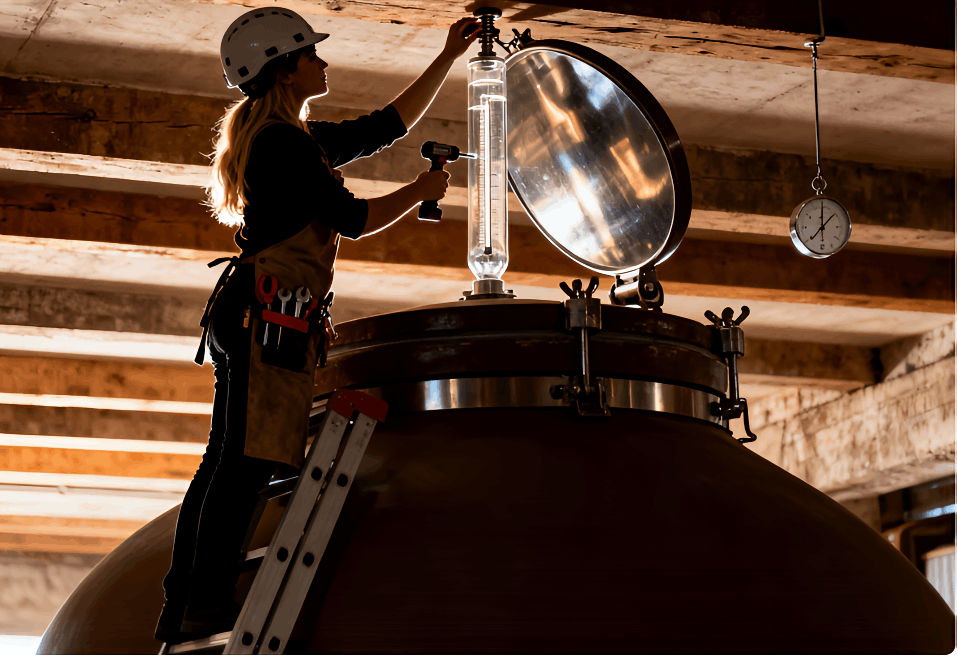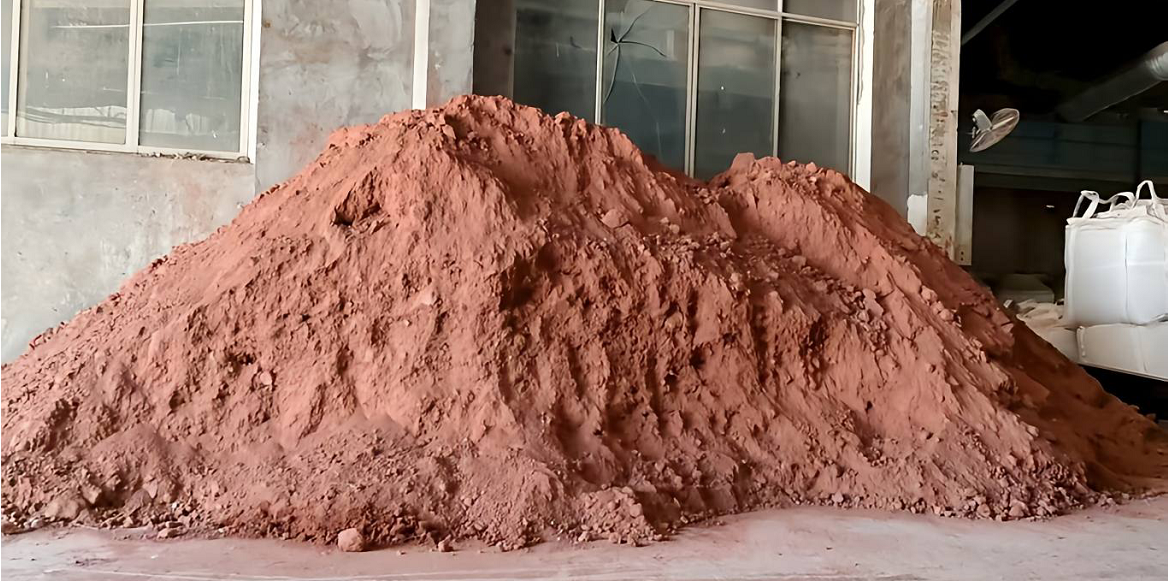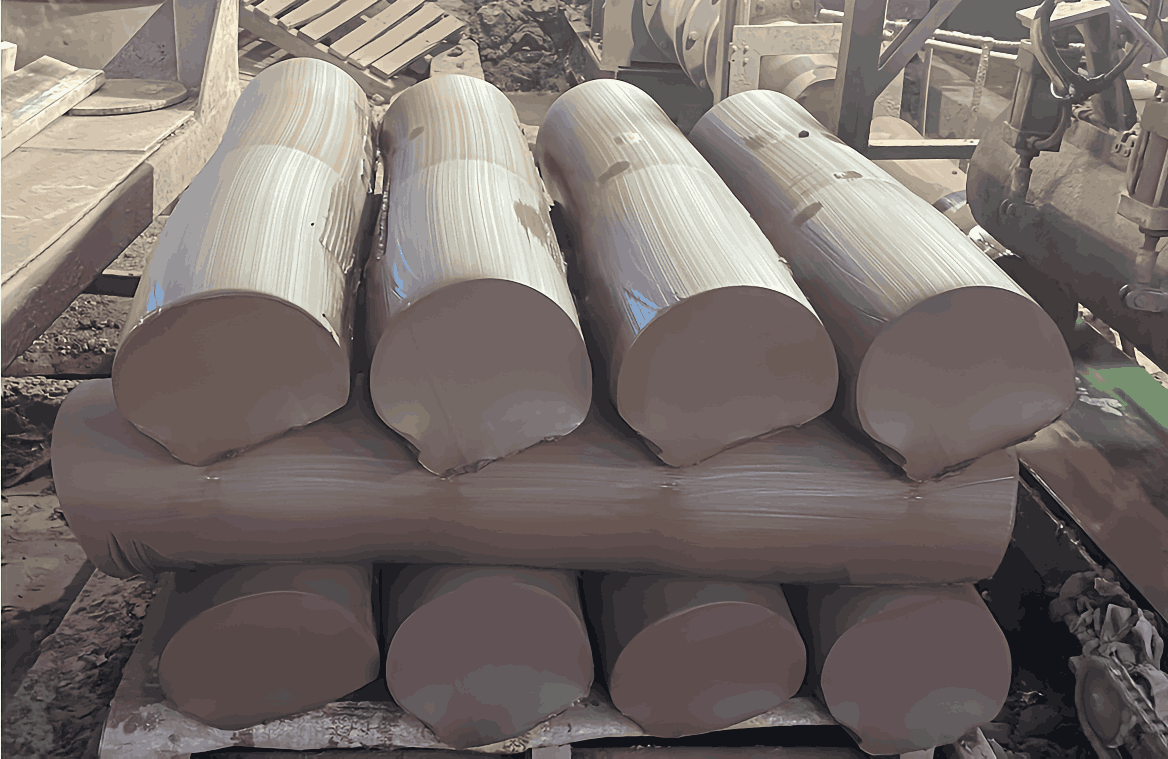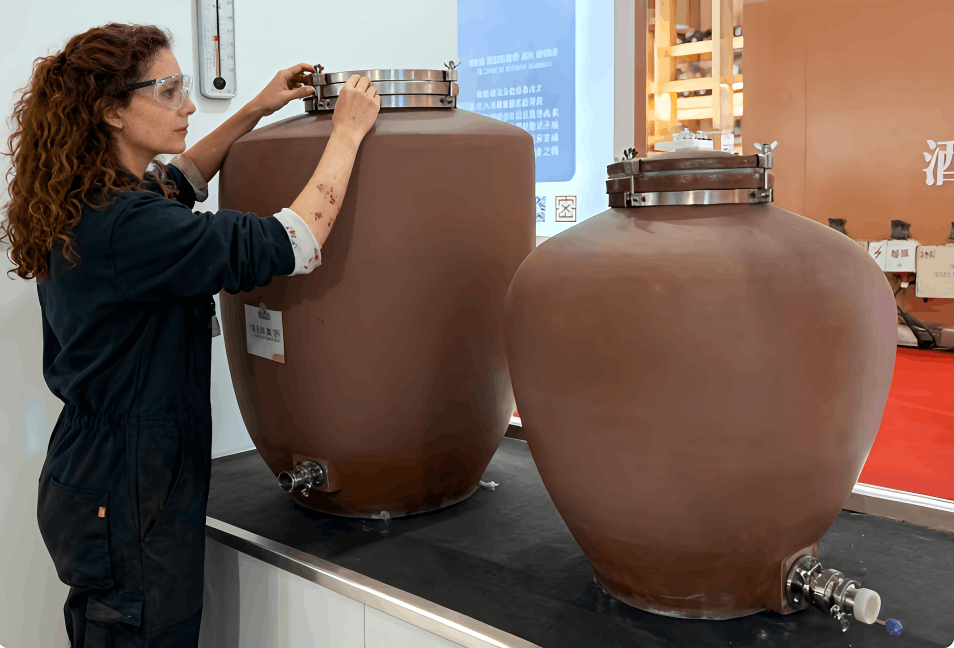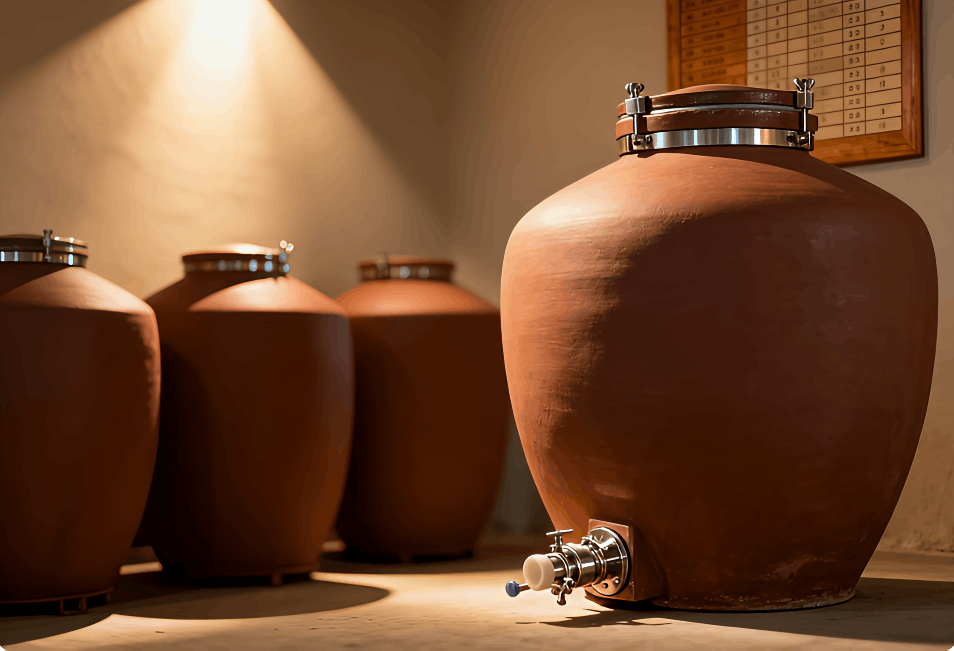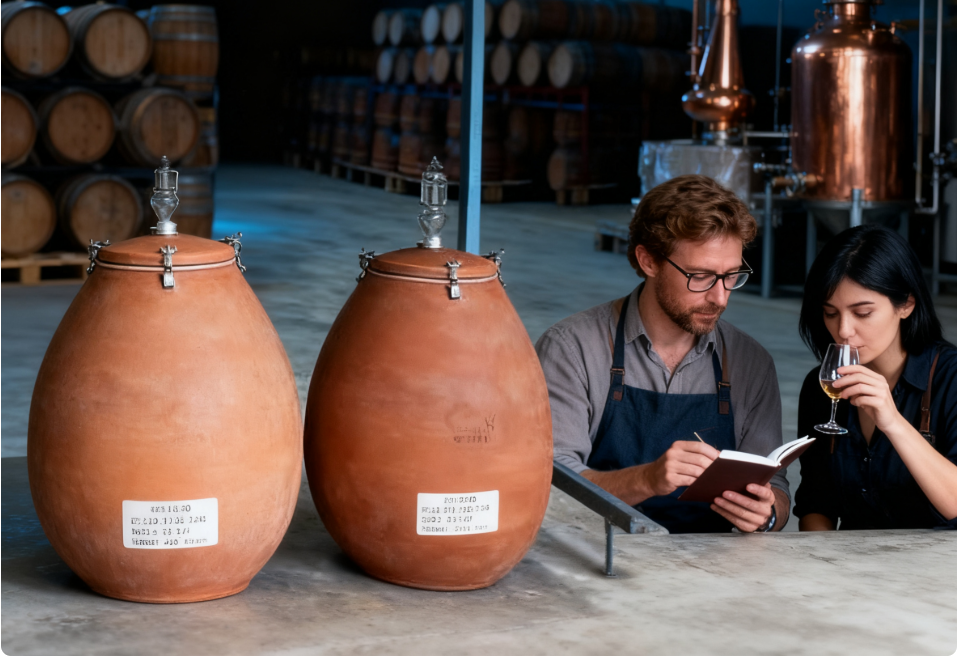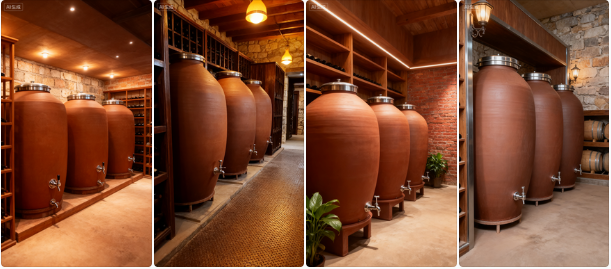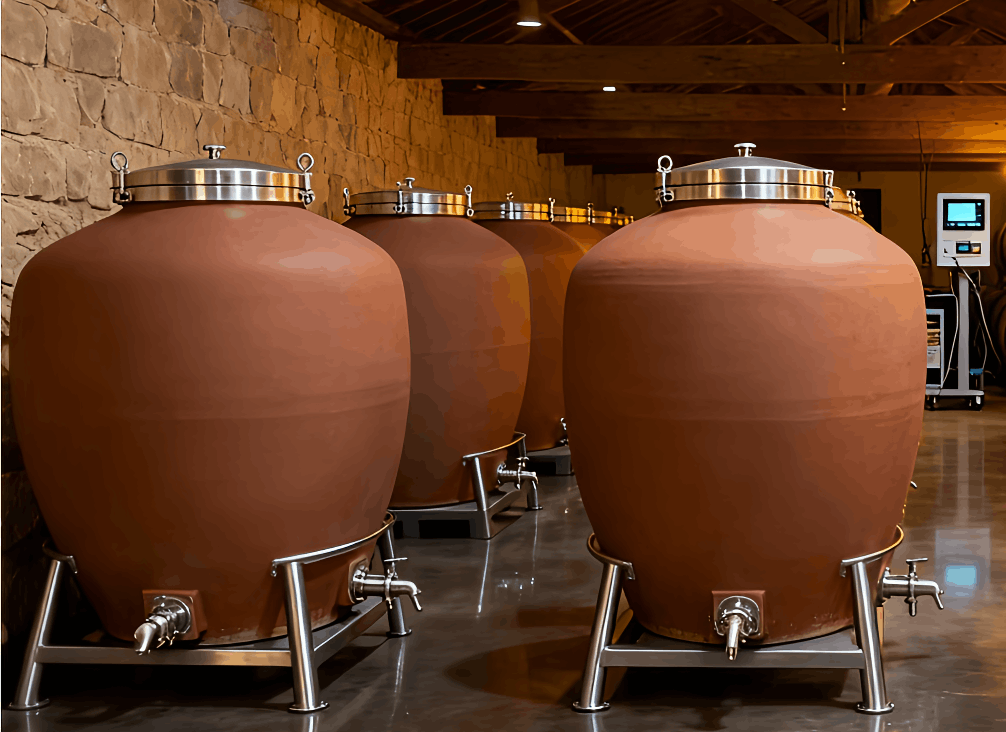What is Amphora Terracotta – Exploring Types, Properties & Applications
An amphora (derived from the Greek word “amphora”) is a special type of clay vessel characterized by two vertical handles, a narrow neck, and a pointed or rounded bottom.
Modern amphora more commonly refer to terracotta jars, fermentation vessels, and winemaking vessels, crafted from natural clay fired at high temperatures.
They are not only highly valued as archaeological artifacts, but also as practical objects cherished for their natural properties.
Let’s explore this special vessel in more detail:
Materials for Making Amphora
Clay:
Amphora are made from natural clay, and the quality of the clay affects the quality of the finished product.
Clay production typically undergoes a series of processes, including natural aging, selection, refining, aging, and filtration, to ensure high-quality clay.
Clay Making
The clay manufacturing process is very meticulous. First, high-quality clay is added with an appropriate amount of water and stirred until it becomes soft, thick, and pliable.
Next, the air in the clay mass is squeezed out and formed into blocks for later use.
Key Properties and Benefits of Terracotta Amphorae
Why have amphorae remained popular from ancient times to the present? The answer lies in its unique material properties.
● Porosity and Breathability
This is the most significant benefit of terracotta. The microscopic pores in the clay allow air and moisture to pass through the walls. This creates a “sweating” effect that naturally regulates temperature and humidity, making it ideal for storing wine, olive oil, and other perishables by preventing spoilage.
● Thermal Regulation
Terracotta is an excellent thermal insulator. It keeps contents cool in heat and protects against rapid temperature changes.
● Durability and Strength
The clay fired at 1200°C is extremely strong, which is why the ancient amphora has been preserved to this day.
● Sustainable and Natural
As a 100% natural material, clay contains no synthetic chemicals, is non-toxic, environmentally friendly and can be stored and used sustainably.
Exploring the Primary Types of Amphora Terracotta
While all amphorae share a common silhouette, their shapes were often dictated by their function and origin. The three primary forms are:
1. Spherical Amphorae
Characterized by a large, globular body, these were often used for storing a wide variety of goods, from grains to wine.
2. Ovoid (Egg-shaped) Amphorae
Today, egg-shaped amphorae are commonly used for wine fermentation. The oval shape facilitates the flow of the wine and allows for micro-oxygenation, making it a particularly popular design among professional winemakers.
3. Cylindrical Amphorae
Cylindrical amphorae were often used in specific regional settings and to hold specific liquids. This type of amphorae is relatively simple in design and easier to mass-produce.
The Amphora Main Uses
Today, we see a renaissance of amphora terracotta use in various fields:
● Wine Making and Aging
Modern winemakers are returning to terracotta amphorae for wine aging. The porosity allows for micro-oxygenation, which softens tannins and adds complexity to the wine without imparting the oak flavor from barrels—a practice often called amphora wine making.
● Olive Oil and Food Storage
Besides winemaking and aging, large amphorae are also ideal for olive oil storage, helping to protect it from sunlight and air, thus preserving its flavor.
Buyer’s Guide: FAQs and Solutions for Amphora Terracotta
1: How Do I Care For and Clean My Terracotta Amphora?
Daily maintenance of your amphora is equally important. First, avoid using harsh detergents. Clean it with a soft brush and warm water.
Second, remove mineral deposits by scrubbing with a paste of baking soda and water.
2: My Terracotta Pot Has a White, Powdery Substance On it. What Is It?
This is efflorescence, a harmless crust of mineral salts (primarily calcium) from the clay and water that migrates to the surface. It can be scrubbed off and is a sign of the material’s natural porosity.
3: Can Terracotta Amphorae be Used Outdoors?
Amphora are suitable for outdoor use. Outdoor use requires protection from frost damage.
If you live in a cold climate, use a frost-proof pot or bring it indoors during cold weather.
Conclusion
By choosing an amphora, you are not merely acquiring a container; you are embracing a piece of living history, crafted from the very earth itself, ready to serve a new purpose in the modern world.
Customize Unique Jars for Your Amphora Project
Hexin is a professional amphora manufacturer and supplier in China. Our R&D team can customize any amphora shape, creating a unique amphora for your winemaking project.
Send your custom request now by filling out the contact form on the right.
One of our experts will contact you shortly!

